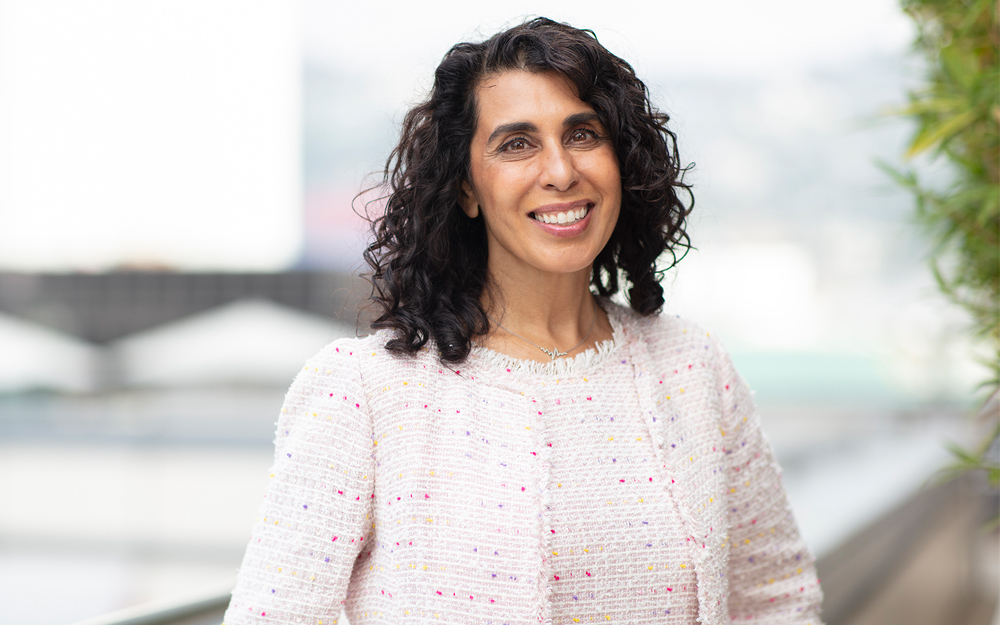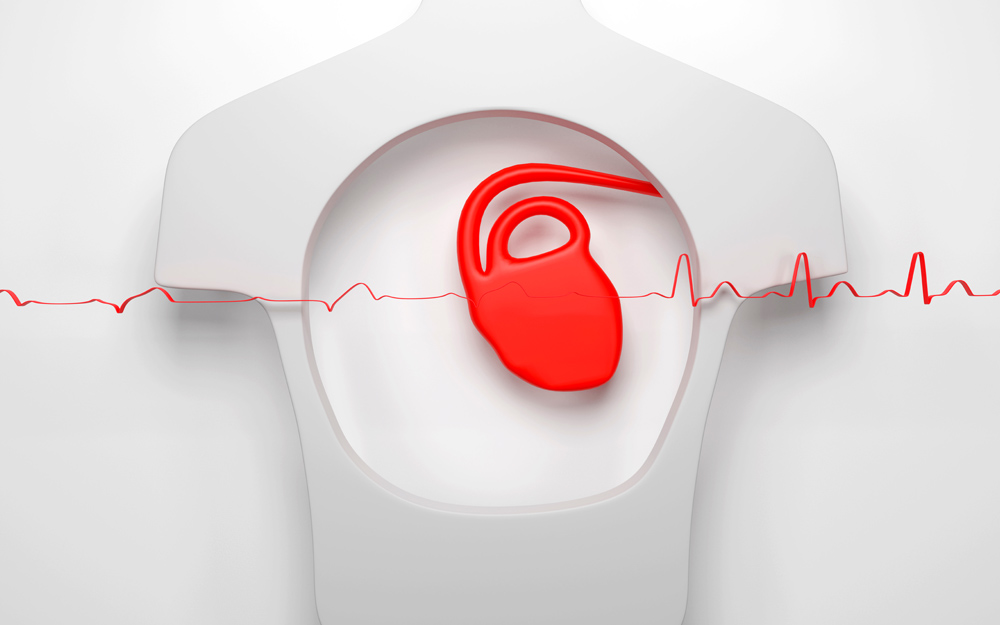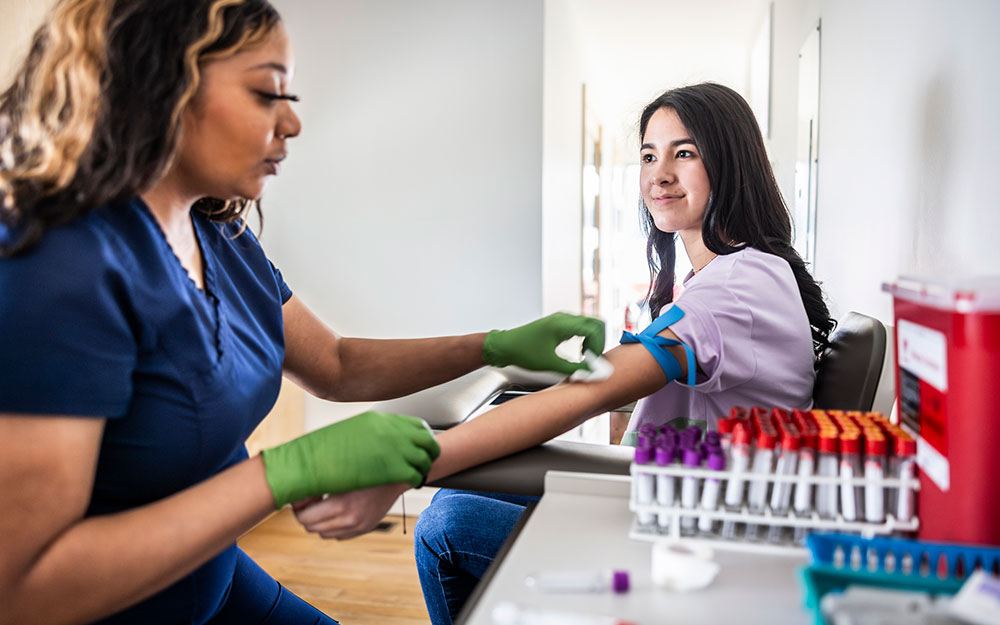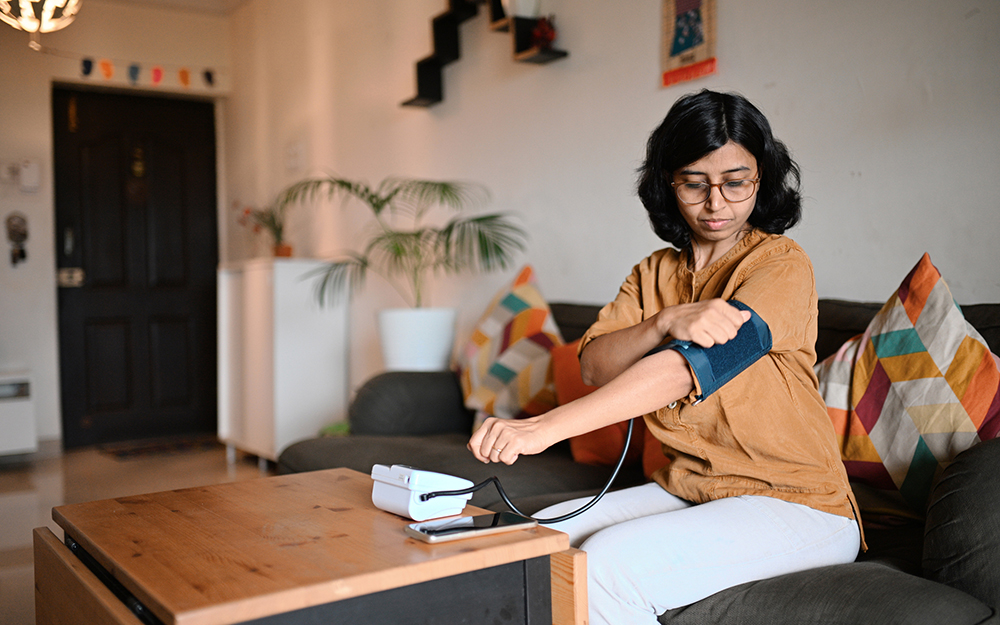Preventing Heart Disease in Women
Date
February 24, 2023

Date
February 24, 2023
Credits
Medical providers featured in this article
In Brief
{{cta-block}}
Dr. Martha Gulati has a firm rule: The Christmas lights can’t come down until March 1. The Canadian-born cardiologist has a valid reason for her strict undecorating schedule.
"February is American Heart Month," says Dr. Gulati, director of Preventive Cardiology and associate director of the Barbra Streisand Women’s Heart Center in the Smidt Heart Institute at Cedars-Sinai.
"Every year I applaud this important public-awareness effort by putting heart decorations on trees in our front yard and on our front gate. At night, the Christmas lights draw attention to the decorations," she explains.
{{providers}}
Passersby assume Dr. Gulati is a Valentine’s Day devotee. That incorrect assumption opens the door for her to draw attention to the deadly threat cardiovascular disease poses to women.
"I like to say, 'Heart disease is the number one killer of women, but lack of awareness is a close second,'" notes Dr. Gulati, author of a bestselling book called Saving Women’s Hearts. Her passion is rooted in her family’s medical tree.
"Many relatives on my father’s side of the family had heart disease, but it was the women who were dying from it,” says Dr. Gulati. "I wanted to know why.”
"I like to say, 'Heart disease is the number one killer of women, but lack of awareness is a close second."
Dr. Gulati joined Cedars-Sinai in July 2022. She was recently named the Anita Dann Friedman Endowed Chair in Women’s Cardiovascular Medicine and Research in recognition of her extensive research in women’s cardiac diseases and the significant contributions she’s made to the field of preventive cardiac care for women. Dr. Gulati is also president of the American Society for Preventive Cardiology.
We sat down with Dr. Gulati to discuss the steps women can take to shield their hearts from cardiovascular disease.
If you could skywrite one heart-health message that every woman on the planet could see, what would it be?
Dr. Martha Gulati: Do you know your risk of heart disease?
Knowing your risk is the first step in protecting your heart. Throughout a woman’s life, this should be an ongoing conversation with her primary care doctor. There are many risk factors that predispose you to cardiovascular disease, including high blood pressure, high cholesterol and diabetes. Heart disease risk is also impacted by weight, exercise and sleep.
Do women’s risks change over time?
MG: Heart-disease risk isn’t static, so it should be reassessed at least every five years. We age, and our risk increases as we get older. We may not be as physically active, which can result in weight gain that raises blood pressure, cholesterol and the likelihood of developing Type 2 diabetes.
What about younger women?
MG: There are other risk factors if a woman becomes pregnant and develops preeclampsia, persistent high blood pressure that occurs during pregnancy or the postpartum period. Preeclampsia increases the risk of developing heart disease, as does gestational diabetes and having a preterm delivery.
You want women to play a proactive role in protecting their hearts. How?
MG: Know your numbers, and know where your numbers fall within the normal range. This is empowering because women will know the right questions to ask. These are the numbers every woman should know:
- Blood pressure—120 (or less) for the top and 80 (or less) for the bottom.
- Cholesterol—LDL, considered the bad cholesterol, should be under 100 mg/dL; there are other cholesterol numbers, but this is the one I emphasize.
- A1C—The A1C test measures your average blood glucose for the past two to three months to determine if you have diabetes; your A1C should be less than 6%.
- Body mass index (BMI)—BMI is a means of answering the question: Are you too short for your weight? A healthy BMI for women is under 25 kg/m2.
Are there any other risk-related numbers that women might not be familiar with?
MG: These numbers aren’t talked about as much, but they’re important too:
- Waist circumference—Having excess body fat around your waist is a risk factor for heart disease. According to the National Heart, Lung, and Blood Institute, women’s waists—as a general rule—should measure 35 inches or less. Or, if your waist enters the room before the rest of you, it may mean you have metabolic syndrome and are at a higher risk of heart disease.
- Hours of sleep per night—Women should be sleeping at least seven hours.
- Exercise—Women should engage in 30 minutes of moderately intense physical activity at least five days per week. Or aim for 10,000 steps a day.
How can women weave in cardiovascular exercise as part of their daily lives?
MG: The main goal is to move more and sit less. If you have an activity tracker or smartwatch, focus on logging 10,000 steps per day. Whenever you can, take the stairs instead of the elevator. Many household chores can add to your step count. Hobbies also can be good sources of exercise.
You’re known for practicing what you preach. You, literally, walk the walk, often wearing one of your signature pairs of heart-themed sneakers.
MG: That’s true. I live three miles from Cedars-Sinai and walk six miles roundtrip every day. Even when we recently had a series of significant rainstorms, I kept walking. My office is on the seventh floor, and I take the stairs, not the elevator. I also jog with my dogs, Binkley and CocoBella. Most weekends you’ll find my husband and I hiking in Runyon Canyon Park in Los Angeles. I also love gardening, which has physical and mental-health benefits.
When we moved to L.A. last year, my husband and I decided we needed to do our part to not worsen the climate crisis, which is negatively impacting people’s heart health. One major step we’ve taken to reduce our carbon footprint is we no longer own a car. We found a house that’s within walking distance of grocery stores, restaurants, a drug store—the places you go in daily life. It’s good for the environment, and it’s good for our hearts.





